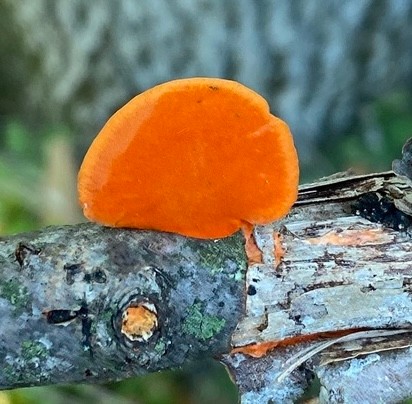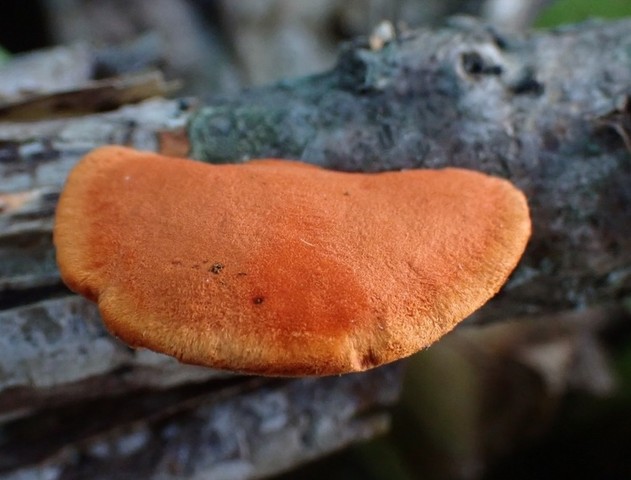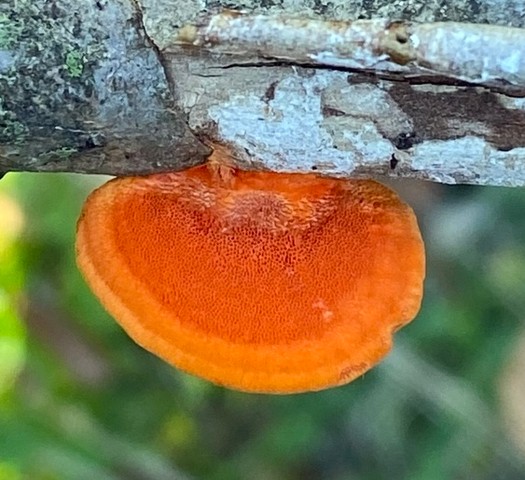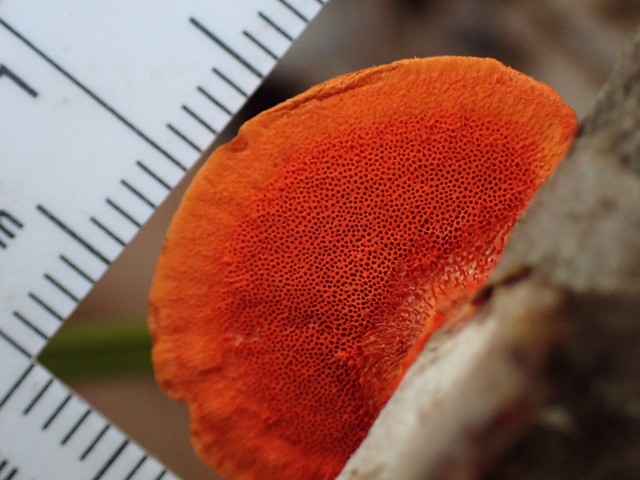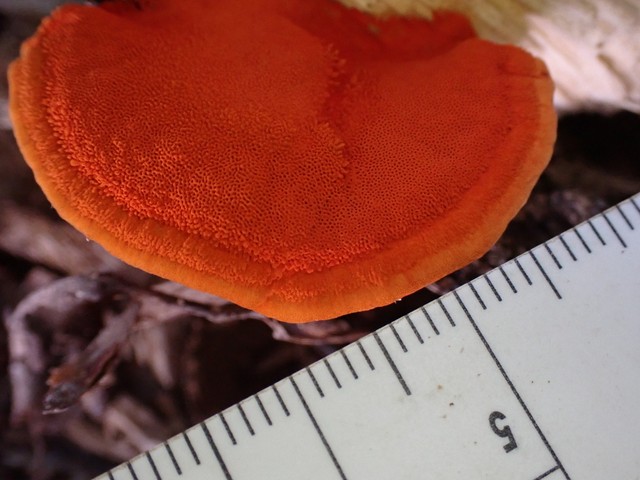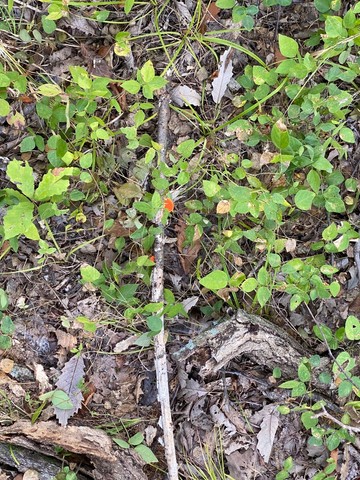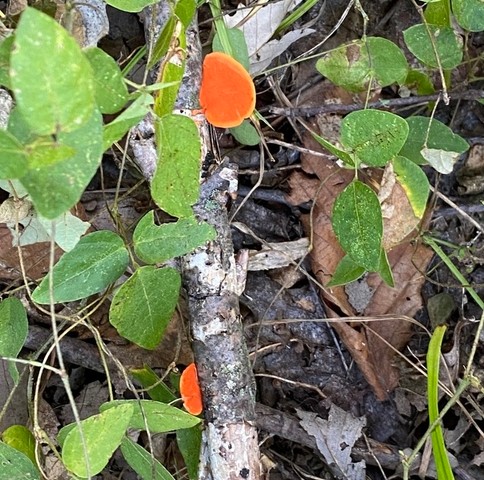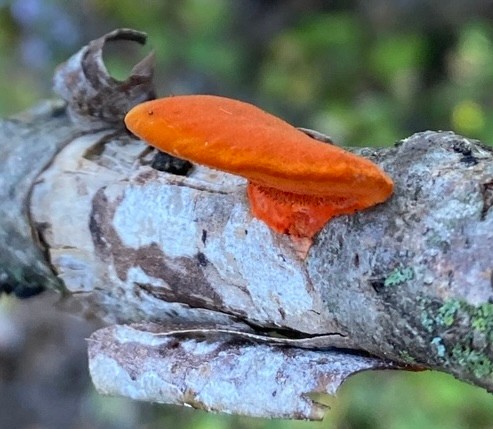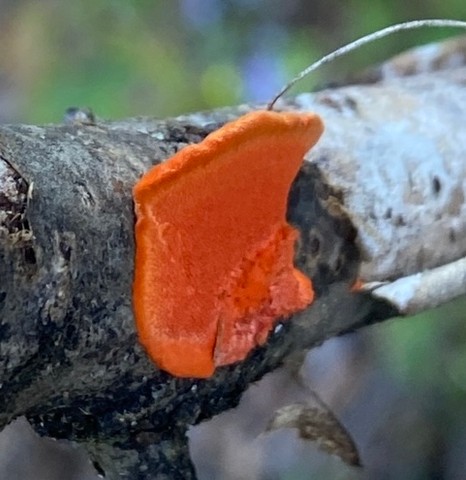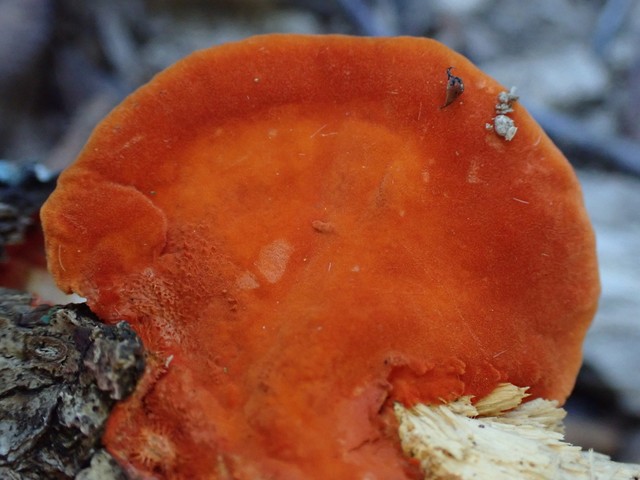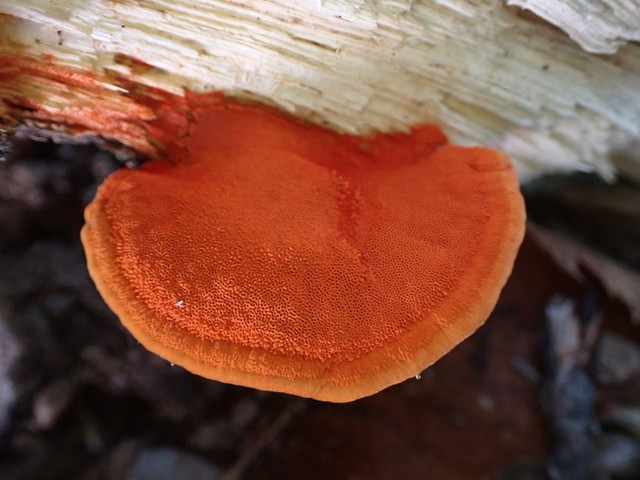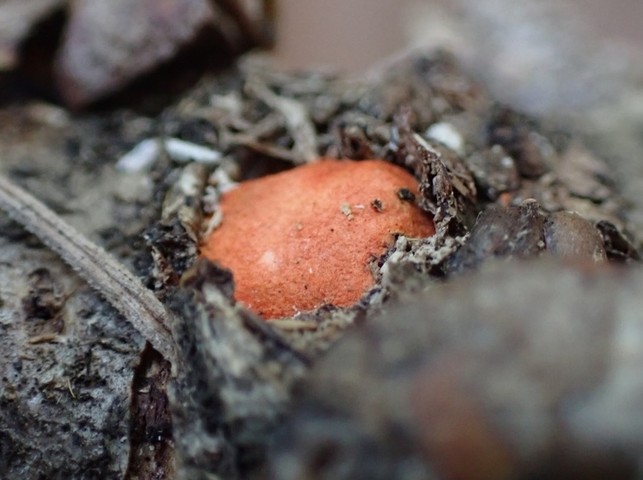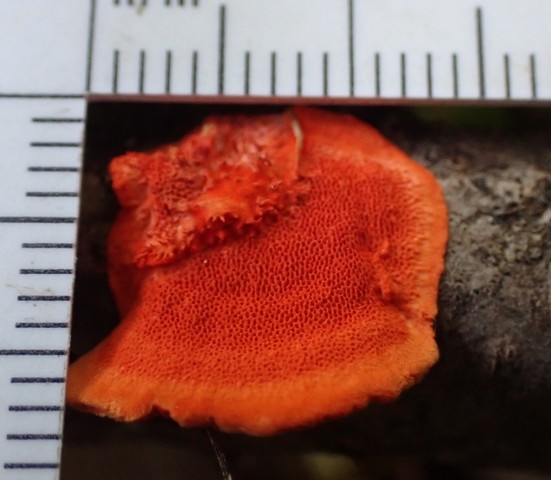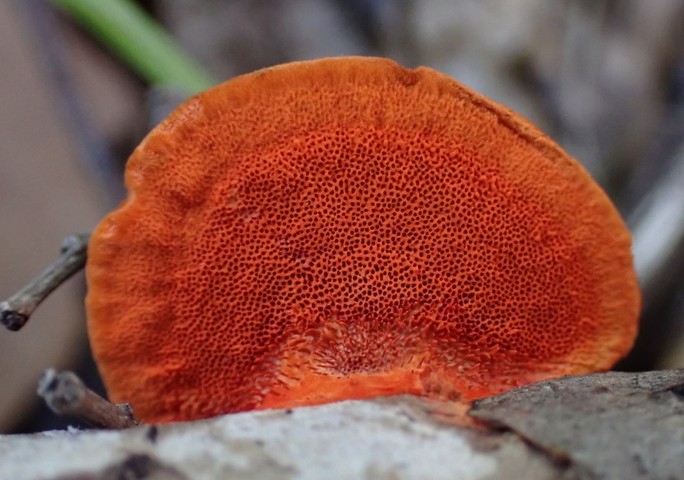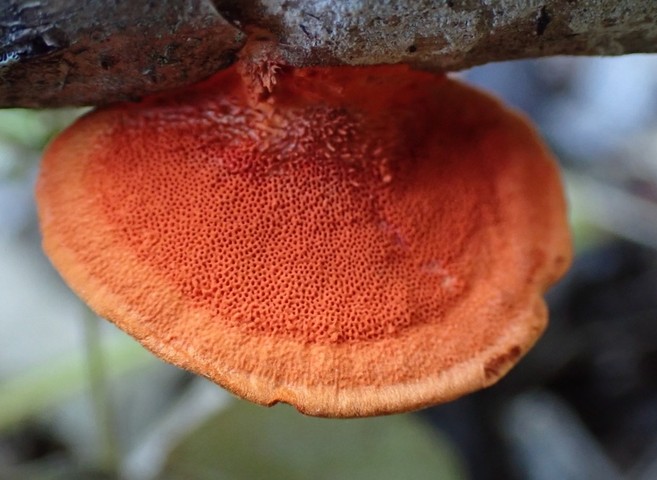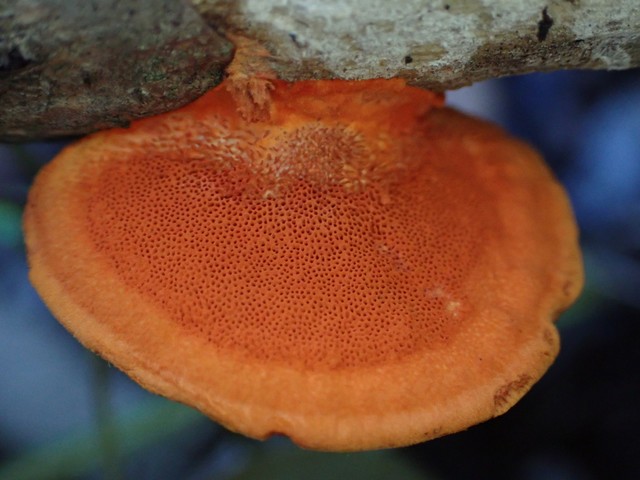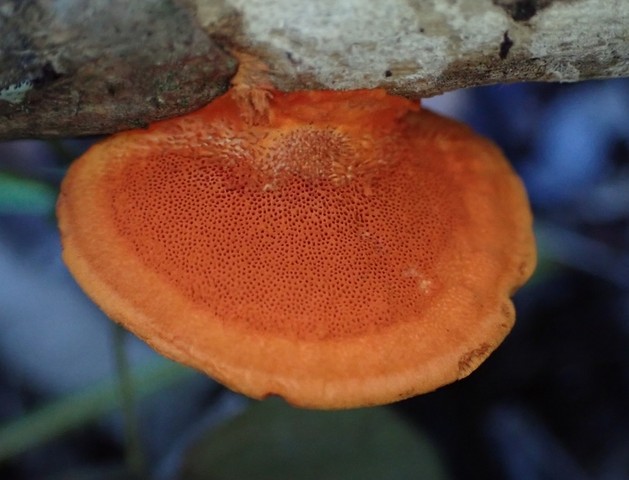Northern Cinnabar Polypore
Trametes cinnabarina
Life > Fungi > Basidiomycota > Agaricomycotina > Agaricomycetes > Polyporales > Polyporaceae > Trametes
Description
The Northern Cinnabar Polypore is a decomposer of dead deciduous trees (usually Oak) and can be found spring through fall. It is widely distributed.
The top-view of the cap is kidney-shaped to half-circular. The side-view of the cap evenly rounded to flat with age, and measures 3/4 to 6 inches (2-13 cm) in width. The color is bright orangish to reddish. The pore surface a similar color to the cap and the pores are rounded to slightly angular. It does not have a stem (sessile). It is sometimes confused with Trametes sanguinea, but the latter is found in more tropical climates.
September 28th, 2023 Field Notes - Indian Cave State Park
habitat: Lignicolous (on wood) [1] growth habit: Gregarious (growing as a group)
Cap: shape: convex (evenly rounded) to plane (flat) to dimidiate (half-circle) to flabelliform (fan-shaped) [2]; texture: smooth to glabrous (bald) to zonate; surface moisture texture: dry - dull
Stem: location: sessile (missing)
[1] Growing on downed hardwood branch in open, west facing slope in Oak/hickory woodland. [2] Applanate
References
Justo, A., & Hibbett, D. S. (2011). Phylogenetic classification of Trametes (Basidiomycota, Polyporales) based on a five–marker dataset. Taxon, 60(6), 1567-1583. https://www2.clarku.edu/faculty/dhibbett/Reprints%20PDFs/Justo-Hibbett-2011-Phylogen-Classfx-Trametes-Taxon60.pdf
Kuo, M. (2010, February). Pycnoporus cinnabarinus. Retrieved from the MushroomExpert.Com Web site: http://www.mushroomexpert.com/pycnoporus_cinnabarinus.html
Created October 14, 2025 at 3:03 PM
